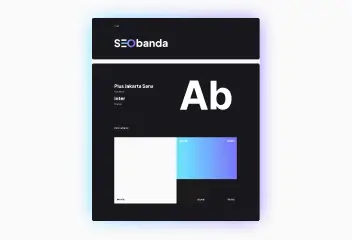

The importance of avoiding errors in SEO optimization
A website in the 21st century is the main tool for attracting customers, so it is much more difficult for a business to exist without a website. SEO is the basis of a company’s online presence, so avoiding mistakes in SEO promotion is important for several reasons:
- Loss of positions in search engines: Your site may lose leading positions in search queries, which will lead to a decrease in organic traffic.
- Decreased conversions: Users may leave your site quickly, resulting in a high bounce rate. This, in turn, has a negative impact on SEO, reduces site ranking and conversion.
- Potential Penalties from Search Engines: Some mistakes, such as using “black” SEO techniques (e.g. buying links, keyword spamming), can lead to penalties from search engines. Your site may be partially or completely removed from the index of search engines, which practically nullifies its visibility in searches.
- Loss of competitiveness: Your competitors, who invest time and resources in proper SEO optimization, can overtake you in search results and take away most of the customers from the Internet.

Increase visibility
for your business: SEO solution for growth!


Typical mistakes
Missing keywords or using them incorrectly
- Problem: Too few or too many keywords can cause search engines to index your site incorrectly.
- Solution: Do thorough keyword research, competitor analysis, and use them organically. Keywords should be naturally integrated into text, titles and meta descriptions. Focus on semantic search and use different variations of keywords.
Incorrect optimization of meta tags
- Problem: Lack of unique and relevant meta descriptions and meta tags (Title, Description) or their duplicates can reduce CTR (Click-Through Rate) and page rank.
- Solution: Make sure each page has a unique, informative and relevant title and description that contain keywords and accurately reflect the content of the page.
Invalid URL structure
- Problem: Using complex or irrelevant URLs can negatively affect the navigation and indexing of pages.
- Solution: Use short, clear and relevant URLs that contain keywords. Avoid dynamic URLs with redundant parameters.
Lack of mobile optimization
- Problem: Ignoring mobile users can result in losing a significant portion of your audience and lower search engine rankings.
- Solution: Make sure your site has a responsive design that displays correctly on mobile devices. Use tools like the Google Mobile-Friendly Test to check how well your site is mobile-friendly.
Slow page loading
- Problem: Slow page load times negatively impact user experience and search engine rankings. Users will not wait for the page to load. If a person does not see the desired content after 2-3 seconds, you will lose a potential customer.
- Solution: Optimize images, use browser caching and CDN (Content Delivery Network) to speed up loading.
Absence of internal and external linking
- Problem: Insufficient number of internal and external links can limit the visibility of the site and its indexing. When it is difficult for a search engine to navigate the site, there are problems with indexing. And when other resources don’t link to your site, Google can’t evaluate how useful it is for users.
- Solution: Create internal linking between relevant pages of your site. For external link building, engage authoritative resources and partners to get links to your content.
Duplication of content
- Problem: Duplicate content on different pages of the site can confuse search engines and negatively affect the ranking.
- Solution: Use tools to find and remove or rewrite duplicate content. Use canonical tags to point to the original version of the page.
Ignoring technical SEO
- Problem: Unoptimized technical aspects of the site, such as incorrect redirects, missing XML sitemap, incorrectly configured robots.txt or indexing issues.
- Solution: Regularly conduct a technical audit of the site, correct indexing errors, use the correct redirects, ensure the availability of an up-to-date XML sitemap and correctly configure the robots.txt file.
Lack of SSL certificate
- Problem: Websites without an SSL certificate (HTTPS) may be considered less secure, and Google prefers websites with a secure connection.
- Solution: Install an SSL certificate and verify that all pages on your site are running over HTTPS to ensure a secure connection and improve SEO.
Low quality content
- Problem: Content that doesn’t help users or doesn’t meet their expectations. Such content negatively affects people’s opinion about your site and does not bring customers.
- Solution: Create unique, interesting and useful content. To do this, it is necessary to analyze the requests and wishes of your users and provide them with exactly what they want to see.
Underestimating the importance of UX (User Experience)
- Problem: Focusing on the technical aspects of SEO without paying attention to the user experience can lead to lower conversions and higher bounce rates.
- Solution: Optimize your site for user-friendliness by providing easy navigation, fast page loading and relevant content.

Increase visibility
for your business: SEO solution for growth!


Conclusion
There are many SEO problems that can negatively affect your site’s position. To avoid mistakes in SEO, you need to optimize the technical elements of the site, create relevant content, take care of UX design and much more. But there is a second, simpler option. Contact SEObanda professionals to avoid all possible mistakes and reach new heights.
You may also like it

What is usability testing and which type is better to choose
Usability testing is a methodology used to evaluate the usability of a website and improve the user experience. This is the process of systematically..

How to use visual content marketing to attract an audience?
Imagine the situation: you've created a website, filled it with informative and interesting text, but the strategy of attracting consumers with text alone no longer...

Brand identity: The key to brand recognition and SEO success
Every product has its own unique feature that sets it apart from other brands. It could be a special font, a unique mascot, or an interesting logo with the right...










